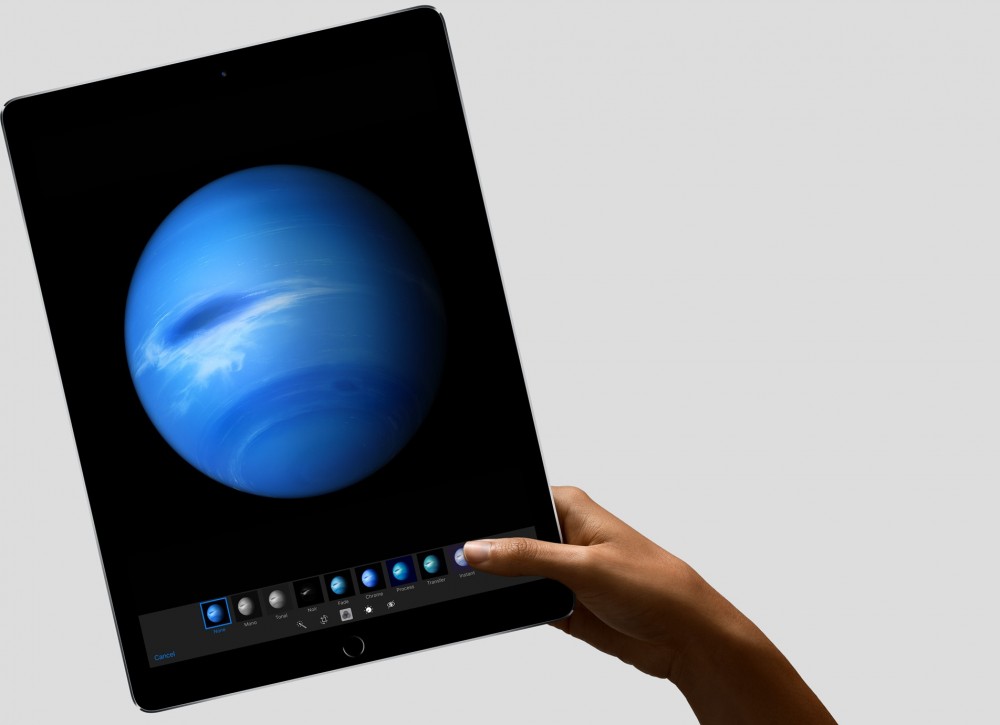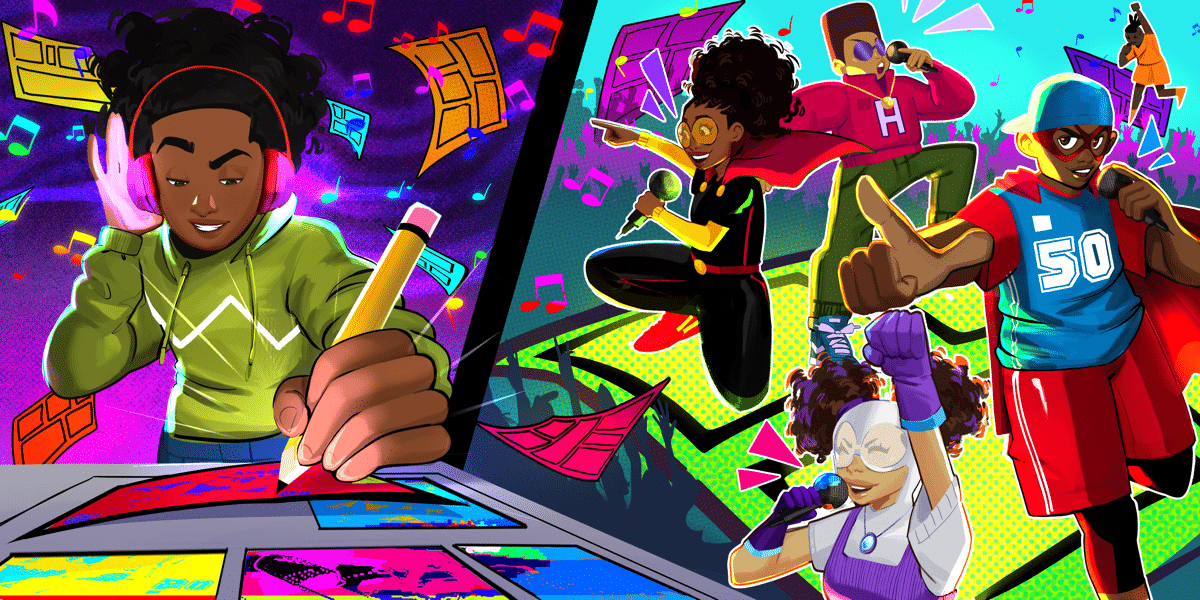By Bruce Lidl
The digital comics landscape has settled down significantly in recent months. Since Amazon’s acquisition of ComiXology in April 2014, it has become essentially the de facto standard for digital comics and now distributes just about every publisher around. Unless a real industry-wide Netflix-type subscription model ever takes off, it is hard to see much prospect for change in the near term. And on the technology side, after the pyrotechnics of the tablet explosion with the introduction of the iPad and then lower cost Android devices from Amazon and Barnes&Noble there has been little ground-breaking disruption.
In fact, as the most recent Apple quarterly earnings report demonstrated, tablet sales are stagnating, with iPad sales decreasing almost 20% from the same period in 2014, while iPhone sales continue to grow wildly. According to a recent Pew Research report, almost half of all US consumers own a tablet device, but that percentage is essentially unchanged from 2014. It would appear that the people who wanted a tablet already have one and are not looking to get a new one.
Clearly, the product life-cycle for tablets is quite different from phones, which remain on a roughly two year replacement schedule for many, either through obsolescence or damage. Needless to say, the slowdown in tablet sales is quite a departure from expectations set during the heady time right after the iPad was released. And Apple is attempting to reinvigorate sales by releasing a larger iPad Pro on November 11 with a 12.9 inch screen that will target business and creative users, and will retail at $799 and up.
From a comics consumption perspective, the new iPad Pro is certainly attractive, and it will likely earn the title “best comic book reader ever created.” But is it enough to drive digital comics readers to trade up? Are readers happy with the display capabilities of their current devices? It is hard to imagine any digital comic reading application needing significant computing power, or vastly larger storage, which leaves the display as one of the few clear upgrade paths.
A competing hypothesis to the life-cycle explanation for the slowdown in tablet sales is the growth of mobile phone screen sizes. In April 2010, when the iPad was introduced, the difference between its 9.7 inch screen and the standard 3.5 inch screen of the current iPhone 4 was quite stark. Now, over five years later, an owner of an iPhone 6S Plus has a 5.5 inch screen that can display comics in a totally different quality. And Android users have had a number of larger phones available for some time, with the Samsung Note offering a “phablet” experience beginning in late 2011. It may be that the media consumption role of the tablet is now being replaced by more powerful and bigger mobile phones that offer digital comics readers a “good enough” experience.
It is hard to say where these trends will lead. There may be a wave of tablet sales as the first generation of devices finally become obsolete, or new devices like the iPad Pro, or the Microsoft Surface 4, may provide enough of a differentiation to get devoted digital comics readers to trade up. Or tablets may disappear as a separate discrete product category as mobile phones get bigger.
Where do you stand as a digital comics consumer? Is your current device satisfactory for your comics needs? Would it have to break or get lost for you to replace it? Are you just waiting for something more exciting, like the iPad Pro to come along? Or do you see your phone becoming the primary consumption point for digital comics? Has the evolution of devices affected your digital comics buying? Would a larger, better device make you want to buy more?








I’ve had my Kindle Fire HD for 3 years now, still in great working condition. I’ve no desire to buy a new tablet since my current one is still rocking. I read tons of comics on it, from comixology and now my local library whom rents their digital editions in cooperation with amazon.com.
“Since Amazon’s acquisition of ComiXology in April 2014, it has become essentially the de facto standard for digital comics and now distributes just about every publisher around.”
Except of course for those it refuses to distribute. Amazon is now in the same position as Diamond: they can’t stop you from selling your comic, but they can stop you from using the largest market for comics readers.
As for the questions posed here… Larger screens are nicer for reading, but I don’t see a lot of people investing in $800 tablets just to get a large-print version of their comics. Especially since creators/publishers have to produce and format their work with 7-inch tablets in mind.
I like reading comics on my 9.7 iPad. I think the iPad mini or even my daughters 7″ Kindle Fire are too small for comics reading however. I’d love an iPad pro to read my comics on but I don’t want to carry that huge screen around with me when I travel. If money was no object, I’d buy the pro for home and keep my 9.7 for traveling but as it stands, the 9.7 is the best all around screen size for me personally and that’s what i’ll buy when it’s time to upgrade my current tablet.
Hoopla, the digital content platform used by many public libraries has done an impressive job bringing comics to their digital offerings. My local library added hoopla comics last month, and I was surprised by the relatively new content across major publishers with some such as Boom offering single issues. The hoopla titles are able to read in both fit-to-screen and panel view mode. Has anyone else used Hoopla? My library limits to 10 digital hoopla items a month and I’m wondering if this is the same everywhere.
I read a lot of comics on my Galaxy Tab 3 which is “old” (is 2 year & a half old ?) and it does the job really well. When it doesn’t Comixology Guided View do the trick. :)
I don’t think about changing my tablet soon and I don’t see why I should or how it should affect the comics market. After all, I’m concerned about digital comics not hardware. So as long as Comixology (or Image Comics for instance) is doing money, my collection is still safe. :)
I switched from an iPad to a Samsung Galaxy Note 10.1 about 6-8 months ago. I use it for all my comic reading. I stuck with iPad for a long time because I was so invested in the infrastructure (apps and games), but I’m sick of the high prices and the lack of expandable memory. The first thing I did with my Samsung was stick a 64 GB micro SD card in it.
To sort of “protect” my Apple investment, I did move to a larger iPhone 6 Plus so I can use my phone for more “tablet” things, but I’ve yet to read any comics on it. I have read a magazine and of course books, but comics are so much more visual I like the large screen for reading. I do like the idea of a 12.9 inch screen, but I won’t buy one until an Android manufacturer produces one (and my current tablet gets older/outdated).
I recently replaced an aging Nexus 7 with a new Galaxy Tab. I’d been using the Nexus as my comics reader, and it worked pretty well. The Galaxy Tab S is actually a lot better, but what finally got me to upgrade was the fact that the Nexus 7 was just so slow at running modern software. I’m really happy with the 8″ Galaxy, and TBH I don’t *want* a bigger tablet. I want something I can read like a paperback book. I don’t anticipate replacing it until it also gets too slow (or breaks).
Last month I read a lot more digitally than in print for the simple reason that I could *find* all my digital comics when I finally had the time to catch up.
As far as tablet sales vs. phone sizes, I’ve actually seen a study that supports that. It was either Pocket or Feedly, and they looked at usage stats for users who had the app on both a phone and a tablet. There was a clear correlation between bigger phone size and reduced time on the tablet.
Comments are closed.